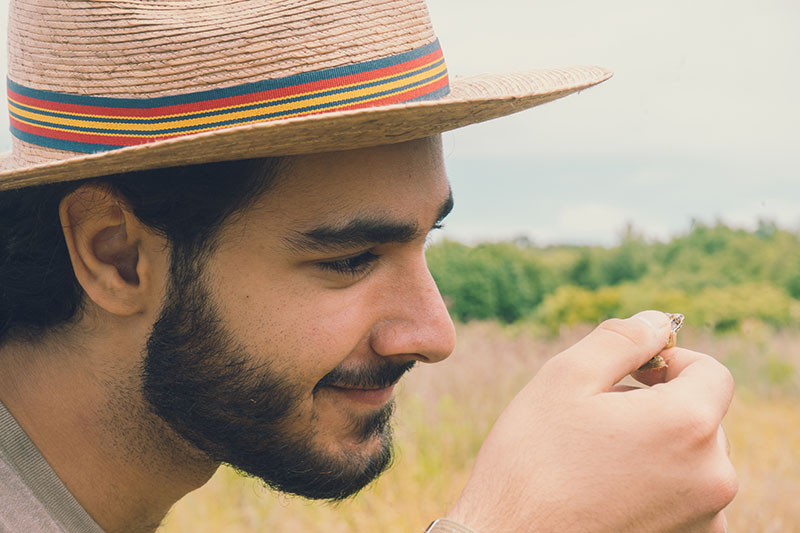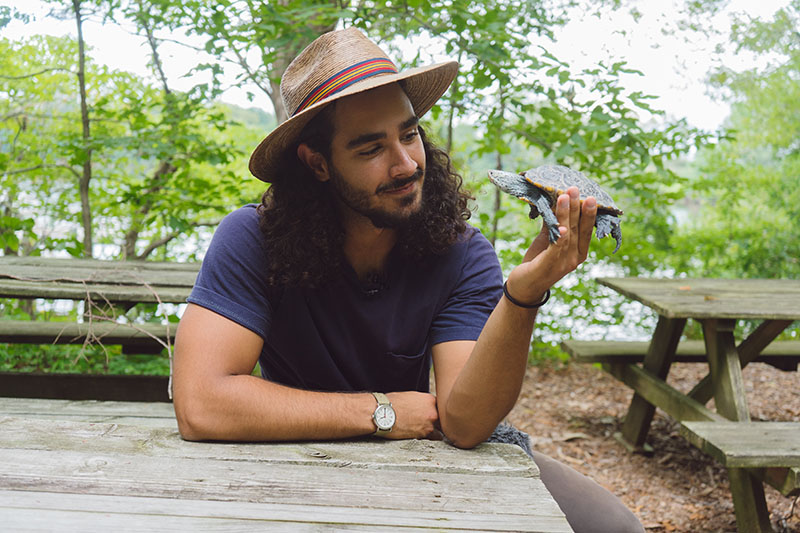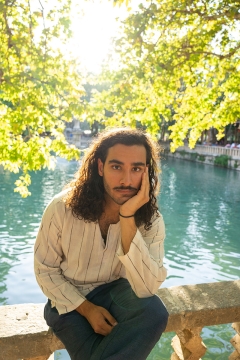Knauss legislative fellowships in Congress help build careers — and they're fun and educational. See our video and fact sheet for details.
Building Understanding: Using digital storytelling to connect people to their environment
One of my firmest beliefs is that everyone deserves access to green spaces and the opportunity to learn more about their environments, and I want to help as much as I can in making that a reality in the places where it isn’t.
I have always been fascinated by the way we form relationships with our environment. Living in Annapolis, my family made regular outings to Sandy Point State Park, where I developed a close relationship with the Bay. I also was fortunate enough to attend a school district that prioritized environmental education, with yearly field trips to places such as Arlington Echo Outdoor Education Center and Chesapeake Bay Environmental Center. This instilled in me a love for the Chesapeake that would only grow stronger as the years went by.
In middle school, I received my first camera for my birthday, and the door opened to what would become my first real passion: photography. I started taking pictures of my friends and I doing tricks on our bikes around the neighborhood when we were in our early teens. Never would I have expected for such an unassuming hobby to lead me to the path I’m on today.

As a Palestinian-American storyteller, I’ve always used photography not only as a form of self-expression, but also as a medium to foster understanding between different communities. As my skills have expanded and the field of digital storytelling has developed—vlogs, videos, short documentaries, and even platforms such as TikTok, YouTube, and ArcGIS StoryMaps—my work with still photography has likewise evolved into a full-fledged passion for this multimedia-driven way of telling stories.
Once I entered high school, I earned an internship with the Maryland Department of Natural Resources where I could use my skills to create educational stories about the Chesapeake in the form of short videos. That opportunity was the start of what I have now come to see as my calling—a meaningful combination of interest in environmental issues and the desire to share my passion for conservation and connect others with the environment through digital storytelling.
I am currently studying environmental science and technology at the University of Maryland, College Park, where I am a rising junior. When my classes went virtual over the past two semesters, I took the opportunity to travel to Istanbul and participate from there, where I’ve been able to immerse in learning Turkish in my free time. In addition to maintaining my own website and Instagram account, I’ve developed multiple photo stories on military occupation in Palestine, as well as documentaries on environmental health inequities in South Baltimore and green infrastructure-based solutions in communities vulnerable to sea level rise on the Eastern Shore of Maryland.

This summer I was fortunate enough to be selected for the Community Engagement Internship (CEI) Program at Maryland Sea Grant. I was drawn to this program because of the special emphasis on professional development and mentorship through access to workshops, mentors, and a national community of fellow CEI interns to help develop my career and advance my learning. I also appreciated Sea Grant’s interest in making this field more equitable to those from underrepresented backgrounds. During my time with Maryland Sea Grant, I will continue to develop my skills using digital storytelling for science communication and environmental education, creating valuable multimedia resources for educators and students alike.
In the future, I would like to work on wider-scale outreach and storytelling projects, with an emphasis on providing access to communities lacking environmental education and addressing environmental justice inequities in the U.S. and beyond.
See all posts to the Fellowship Experiences blog

